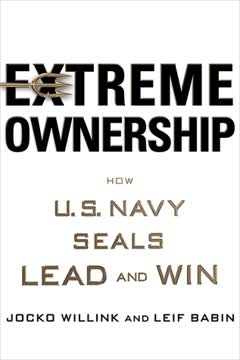Key Takeaways
1. Tarantino's films explore complex moral codes within criminal worlds.
“He Don’t Tip”
Beyond simple immorality. Tarantino's characters, though criminals, are not simply amoral psychopaths. They engage in moral debates, possess natural sympathies, and adhere to internal codes of conduct, such as professionalism and loyalty.
- Debates over tipping ethics (Reservoir Dogs)
- Loyalty as a valued trait (Pulp Fiction)
- Professionalism defining acceptable violence (Reservoir Dogs)
Human nature's foundation. These moral impulses and codes suggest that morality arises from human nature and social interaction, not just objective rules. Even in a brutal world, characters display familiar patterns of justification and attempts to preserve a moral identity.
Plausibility through morality. The characters' moral lives make them believable, demonstrating that even in fictional criminal societies, human psychology drives the development of ethical frameworks, however warped they may seem to conventional morality.
2. Revenge is a central, often justified, but ethically nuanced theme.
“That woman deserves her revenge. And we deserve to die.”
Revenge vs. Retribution. Tarantino distinguishes personal, emotional revenge from impersonal, proportionate retribution. While retribution seeks just punishment by anyone, revenge is fueled by the victim's desire for satisfaction and sets its own limits.
Justified vengeance. Films like Kill Bill portray revenge as morally justified, even applauded, for severe wrongs. Characters and narrative voiceovers explicitly endorse the victim's right to vengeance against their tormentors.
Ethical boundaries. However, Tarantino's portrayal isn't absolute. Revenge can go "too far" if it involves undue punishment or harms innocents. The films suggest that while vengeance can be permissible when punishment fits the crime and spares the innocent, it doesn't negate the value of mercy or forgiveness.
3. The films manipulate time and narrative to challenge perception and reveal character.
“Is That Rutger Hauer?”
Nonlinear storytelling. Tarantino frequently uses fractured temporal sequences and multiple perspectives to disrupt conventional narrative. This forces viewers to actively piece together events, highlighting how present understanding is shaped by past details and differing viewpoints.
Aspect perception. Scenes are replayed from different angles or presented in ways that cause viewers' perception to shift, akin to Wittgenstein's duck-rabbit. This emphasizes that how we "see" an event or character can change based on new information or context, even if the objective facts remain the same.
Pragmatism of knowledge. Characters like Jackie Brown navigate this uncertain reality with pragmatism, valuing "reason" and "knowledge" not as absolute truths but as tools effective within specific contexts or "language games." Conscious uncertainty becomes a pragmatic advantage in a world full of aporia.
4. Tarantino's universe is characterized by a Nietzschean struggle for meaning and strength against nihilism.
“Whoever has attained intellectual freedom even to a small extent cannot feel but as a wanderer upon the face of the earth—and not as a traveler toward some final destination; for that does not exist.”
Beyond traditional values. Tarantino's world lacks traditional religious meaning or universal moral codes. Events are often random, challenging characters to find purpose in a seemingly nihilistic universe.
Strength in meaning creation. Characters like Jules in Pulp Fiction embody a Nietzschean "superman" or "free spirit" who creates meaning from chaotic events. This existential strength allows them to transcend conventional values and escape cycles of violence, unlike those who remain "weak" and passive.
Overcoming nihilism. The films suggest that true strength lies not in physical prowess or adherence to external rules, but in the ability to interpret life's randomness, forge personal values, and affirm life in the face of its ultimate lack of inherent meaning.
5. Psychological drives, from sadism to Oedipal conflicts, underpin character actions.
“I’m a Bad Person”: Beatrix Kiddo’s Rampage and Virtue
Sadism and justification. Characters like Mr. Blonde display sadistic tendencies, finding pleasure in inflicting pain. While seemingly gratuitous, these actions can be analyzed through theories of punishment, suggesting they align with a retributive view where suffering is deserved, even if the character's motivation is purely sadistic.
Oedipal themes. Kill Bill is interpreted as an Oedipal play, with Beatrix symbolically killing the father figure (Bill). The narrative explores the complex, often unhealthy, dynamics of childhood relationships and the struggle for power between parental figures.
Character and virtue. Despite their violent actions, characters are often evaluated based on traits like courage, honor, and loyalty, suggesting a warped form of virtue ethics is at play. Their "badness" is sometimes framed within this internal code, highlighting the psychological complexity behind their choices.
6. Buddhist philosophy offers a lens to view suffering, interconnectedness, and potential enlightenment.
To a Buddhist, all aspects of existence are interconnected.
Suffering and its cause. Buddhist concepts like suffering (dukkha) and its origin resonate in characters' motivations, particularly Beatrix Kiddo's quest for revenge. Suffering is seen as a result of attachment and delusion, and ending it requires addressing its cause.
Interconnectedness and Karma. The nonlinear narratives and recurring consequences illustrate the Buddhist principle of interconnectedness and Karma (causation). Actions have results, and understanding this chain is crucial, though characters often only grasp superficial causes of their pain.
Impermanence and potential. The Buddhist idea of impermanence challenges fixed notions of identity ("natural born killer"). While characters like Beatrix lack compassion and true understanding of emptiness, the concept of Buddha Nature suggests that enlightenment, or freedom from suffering, remains a potential, perhaps in future lives.
7. High-stakes standoffs reveal the limits of rational self-interest in the "Ex-Convict's Dilemma."
Perhaps the only plausible solution to an ECDS is to avoid getting into one in the first place.
The Prisoner's Dilemma in action. Tarantino's frequent "Mexican standoffs," termed "Ex-Convict's Dilemmas" (ECDS), are instances of the Prisoner's Dilemma. Individuals acting purely in self-interest lead to mutually destructive outcomes, while cooperation would be better for all.
Failure of group rationality. Unlike theoretical solutions that assume rational agents will cooperate for mutual benefit, Tarantino's ECDSs often involve conflicting goals and animosities. Rational self-interest fails to produce cooperation, frequently resulting in violence and death.
Luck or external factors. When characters survive ECDSs, it's often due to external distractions, luck, or a sudden shift in priorities (like protecting a child or buying off the opponent), rather than a reasoned agreement to cooperate for its own sake. This highlights the unpredictable nature of these high-stakes situations.
Last updated:
Review Summary
Quentin Tarantino and Philosophy receives generally positive reviews, with readers appreciating its insightful analysis of Tarantino's films through various philosophical lenses. Many found it accessible and thought-provoking, highlighting themes like morality, revenge, and existentialism. Some readers particularly enjoyed essays on specific films like Pulp Fiction and Kill Bill. However, a few critics felt some interpretations were forced or superficial. Overall, the book is praised for offering new perspectives on Tarantino's work and encouraging deeper exploration of philosophical concepts.
Popular Culture and Philosophy Series Series
Similar Books
Download PDF
Download EPUB
.epub digital book format is ideal for reading ebooks on phones, tablets, and e-readers.
















